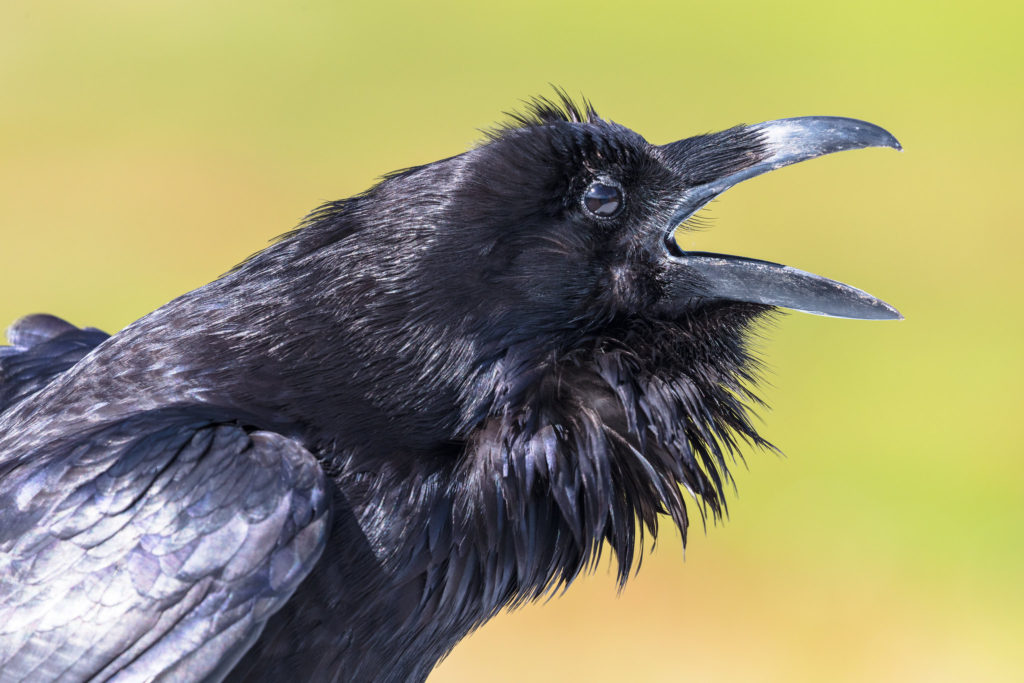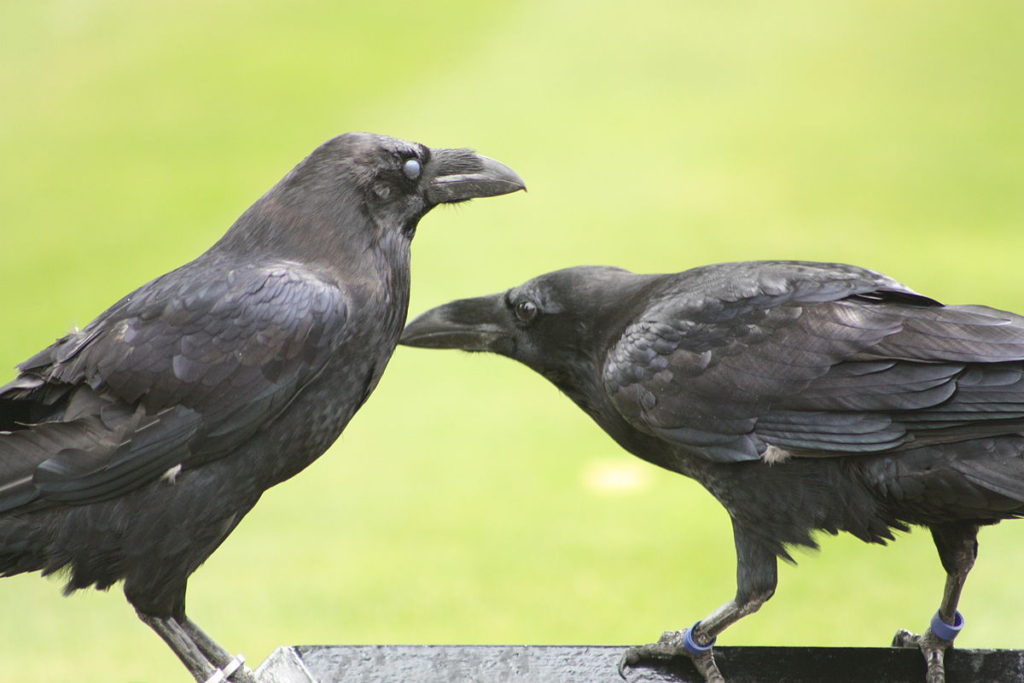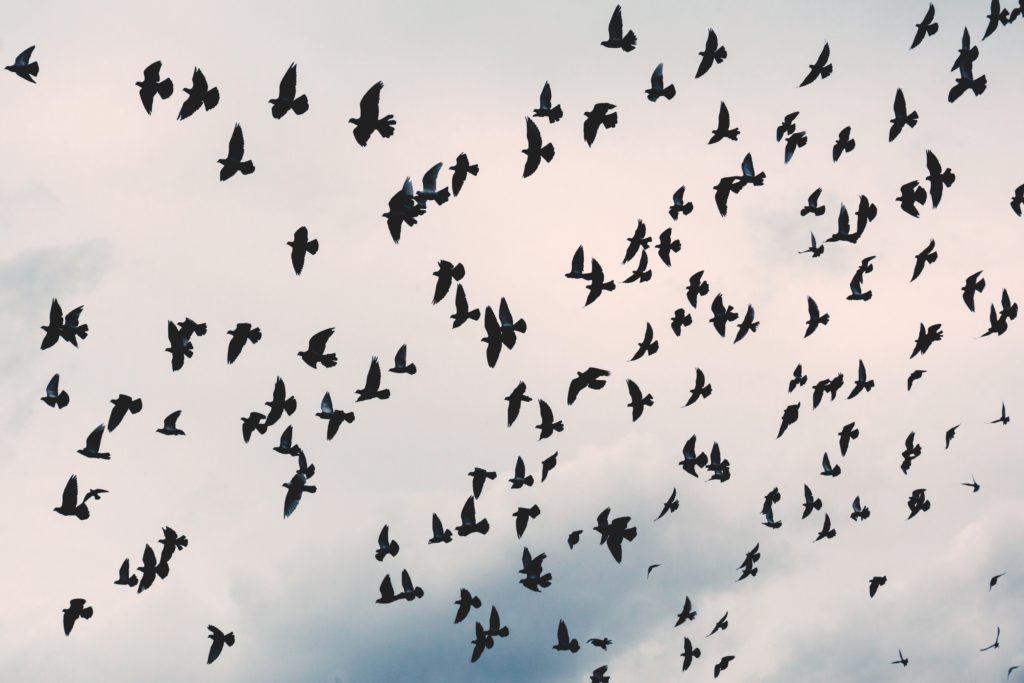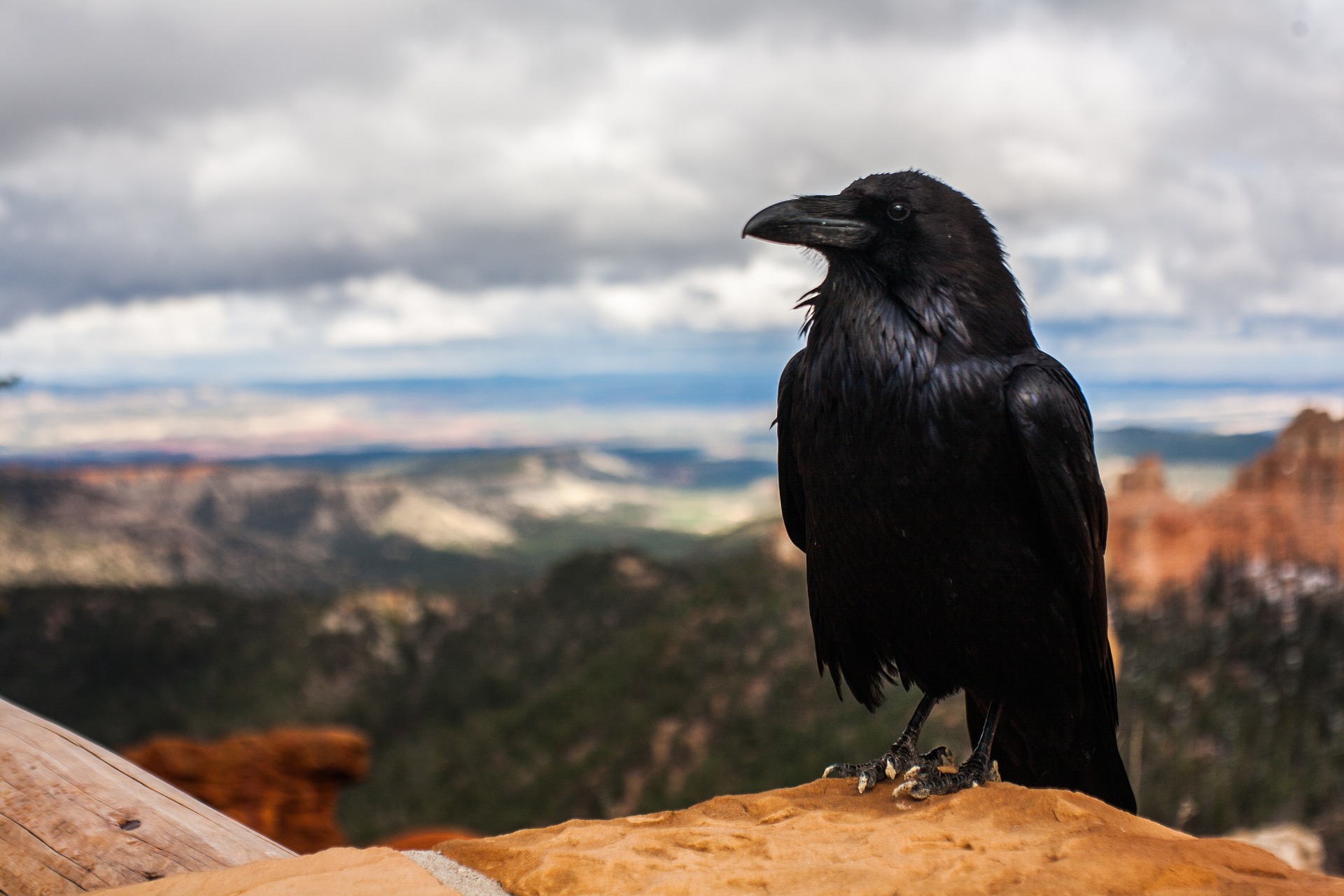We are nigh on Halloween, and what better way to usher in the season than with a focus on the most mysterious of birds: the raven. Here are 13 fun and slightly scary Halloween facts about ravens that will make you underestimate them “nevermore.”
#1: Ravens are highly intelligent
As a part of the corvid bird family, which includes crows, ravens are large black birds with brains relatively big for their size. However, one difference between ravens and crows (other than the raven’s larger size) is that ravens are more intelligent. Nonetheless, all members of the corvid family have been known to craft and use tools, plan for the future, barter, and even play games like hide-and-seek.
#2: Ravens are excellent hunters
Often hunting in groups, ravens have been known to trap and kill prey twice their size. They will also hide their food from other predators, even other ravens. In fact, they often “pretend” to hide food in a safe place while another raven is watching—only to move the food cache to another location when unobserved!
#3: Ravens can mimic human voices

In fact, they are often even better at it than parrots! These intelligent birds can also mimic animal and bird calls as well as various “manmade” sounds like a toilet flushing or a car starting.
#4: Ravens gesture to communicate
From holding up objects of interest (typically a male mating ritual to lure a female) to “pointing” at things with their beaks, ravens have been elevated to a level of communication that, until recently, was observed solely in humans and apes.
#5: Ravens can live anywhere
Found in North America, Europe, Africa, and Asia, ravens can live in diverse environments ranging from urban areas and forests to high deserts and tundra.
#6: Ravens remember faces
Perhaps one of the most impressive, and unsettling, facts about ravens is that they have what is called “episodic memory,” much like humans and other primates. This allows them to remember human faces and other characteristics, particularly in association with an emotion or event, which leads to our next fact.
#7: Ravens have friends…and enemies
Ravens tend to prefer companionship with other ravens, particularly if they are relatives and of the opposite sex. But raven or human, don’t cheat them or they’ll remember—and probably won’t “work” with you again! In fact, ravens are known to hold grudges for up to one month after a sour experience!
#8: A group of ravens is called an “unkindness”
And if that isn’t spooky enough, other collective nouns for ravens include a “treachery” and a “conspiracy.”
#9: Ravens travel in gangs before pairing off

In their younger years, ravens travel in small flocks before pairing off—a sort of “Friends”-like meet-cute, only Ross and Rachel mate for life in this scenario.
#10: “The Raven” poem haunted Edgar Allan Poe

The iconic poem launched Poe from a virtual nobody to an overnight success, but his newfound popularity wasn’t always easy for the writer. Children were known to follow him through the streets, flapping their arms and croaking like the poem’s namesake. Poe’s response? Shouting “Nevermore!” at them until they ran away.
#11: Ravens are powerful symbols in lore
Often associated with death, illness, or a bad omen, ravens have been featured in ancient stories from around the world and in almost every culture. For example, Swedish folklore has it that ravens are the spirits of murdered people who weren’t given Christian burials. Irish folklore sees ravens as symbols of warfare, and the Hindu deity Shani is often visualized as mounted on the back of a giant raven.
#12: There are white ravens

These light-feathered birds are actually ravens with a rare pigment condition called leucism, which gives them their fair feathers and, oftentimes, blue eyes.
#13: The raven population is exploding

Over the past decade, there has been a steady and dramatic increase of ravens in North America. Of particular note is the Mojave Desert, which has reported a staggering 700 percent increase of the black birds over the past 40 years! While this is good news in the midst of a “bird crisis” in North America and Canada, which have collectively lost nearly three billion birds since 1970, this raven boom could spell trouble for the US population of desert tortoises, which are a favorite raven delicacy.
COMING IN OCTOBER: Learn more about ravens with us!
Join us on October 19th for a special Bird Talk about ravens and owls, featuring a guest speaker with expert advice on these smart yet sinister-looking birds!
(White raven photo courtesy of Mike Yip.)


